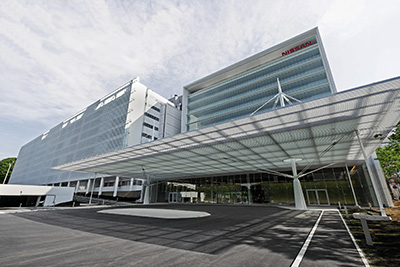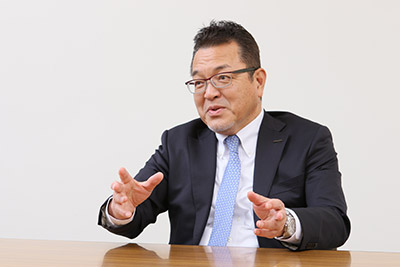New Scheme faces a big challenge: what are the sub-processes of product development?

Nissan Technical Center, the Development Base
The task of product development department begins from phases of product planning and car design processes. It then determines and defines the mechanical design including detailed specification, components, and costs to build up a prototype model.
The product development process under the new Scheme remains basically the same as Nissan Motor’s, which method can be divided roughly into two phases: the first one is called a “digital phase” where a clay modeled vehicle is converted into data which is then assembled by CAD systems and other software for the purpose of developing a body design mainly by means of virtual data simulations. At this point, the team seeks to reach agreements and obtain approvals inside the company from a perspective of specific numerical values of performance, costs, and other factors of the new model. Based on the blueprint completed within the digital phase, it begins a new phase where components are actually produced by way of trial and used for building a tangible prototype; this phase is called a “physical phase” against the digital phase. While NMKV takes a role to administrate the product development processes, it remains Nissan’s responsibility to undertake the actual development tasks such as the mechanical designing and testing.
For Nissan, it will be the first attempt to develop a Kei-car product. The existing model was developed under the old scheme which had adopted Mitsubishi development processes; the collaboration of both parties by then remained at the level where only part of Nissan expertise had been incorporated into such processes, through NMKV’s project management drive. The new Scheme could be a game-changer, merging Mitsubishi’s in-depth expertise on Kei-car production into the processes of Nissan. It can be interpreted as a grand restructuring of car product development which naturally requires intensive communication and information exchange between both parties more than ever before. A major challenge for NMKV was to build a bridge over a chasm of businesses.
Each Nissan and Mitsubishi has their own set of methods of car product development, and they have different steps for obtaining internal approvals. Additionally, many processes and/or tasks are named differently (of which contents are the same nevertheless). Unless there is a unified language agreed by both parties in advance, they were unable to just have proper conversation - not to mention sharing their expertise. This is why NMKV began from making a common language by checking up the terms, one by one.

Horiuchi, CTO
Amid the product development of the next generation model, they say that Nissan and Mitsubishi’s product development members enjoyed open and agile discussions for exchange of information and opinions beyond the corporate barriers, thanks to the common working grounds prepared under the banner of NMKV. “At NMKV, there are no corporate barriers between Nissan and Mitsubishi. They are all part of NMKV family and all of them pay respect to each other. Such collaboration allows us to have an in-depth discussion one or two steps ahead of other similar partnership”, says Horiuchi CTO (Chief Technology Officer). Through the alliance of Renault, Nissan, and Mitsubishi, the level of cooperation and collaboration have advanced significantly with NMKV assuming the forefront position of their endeavor.






